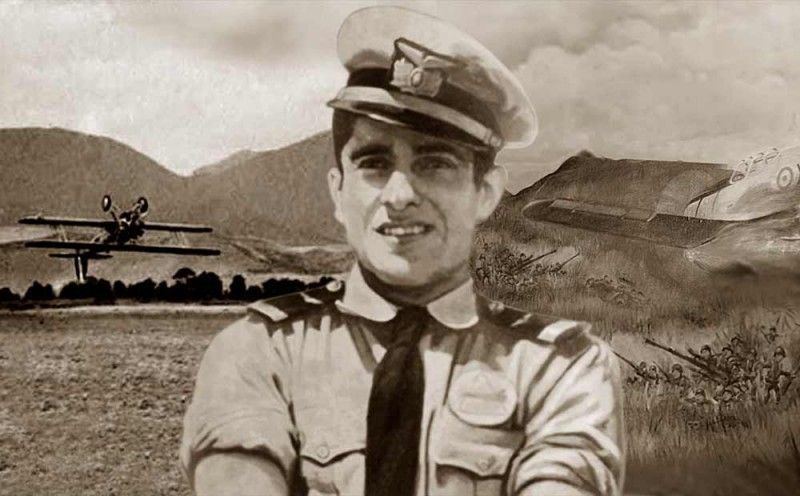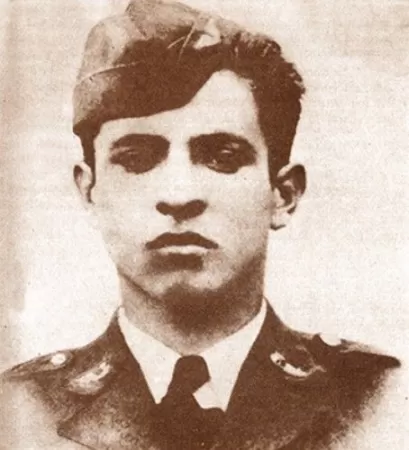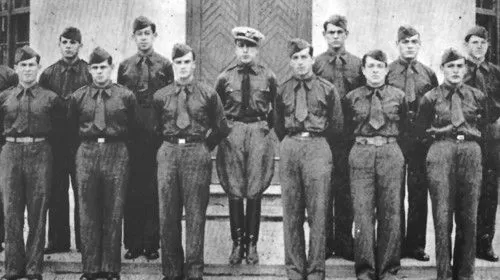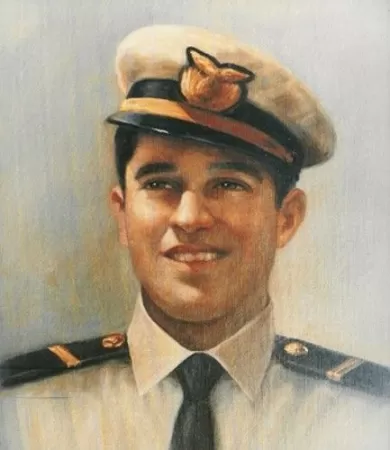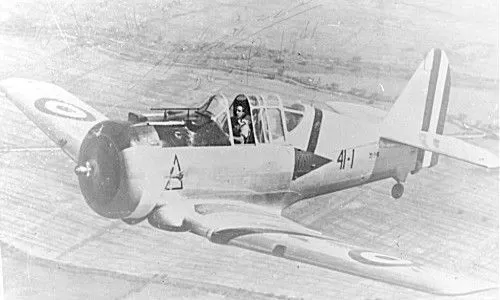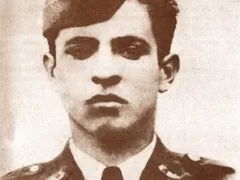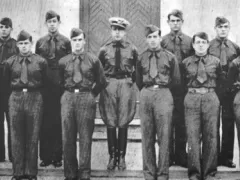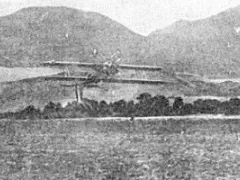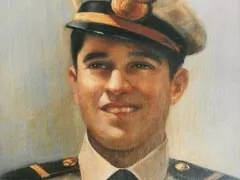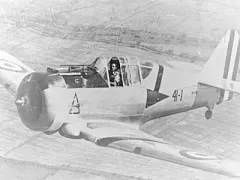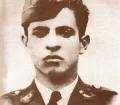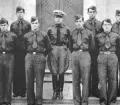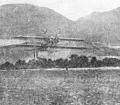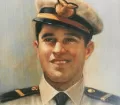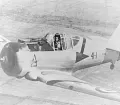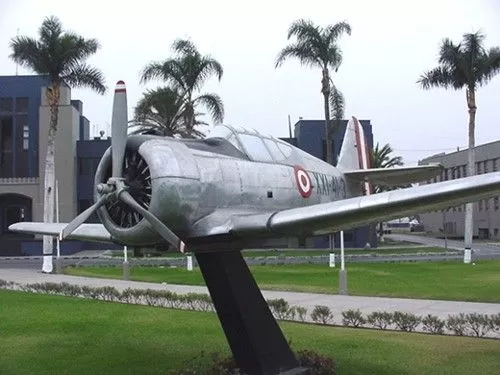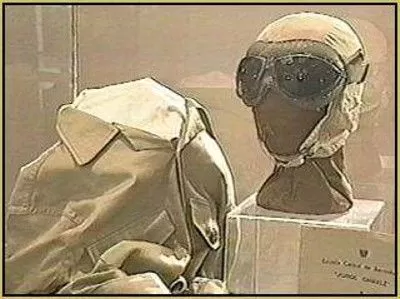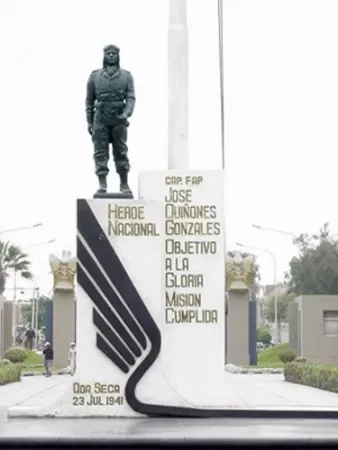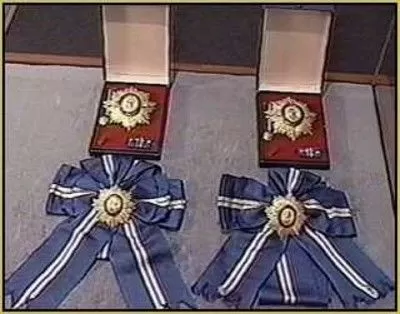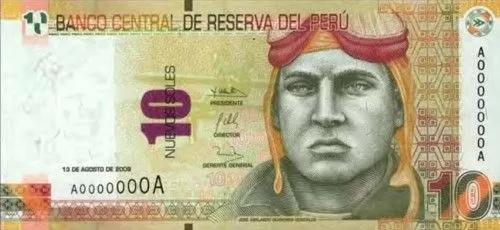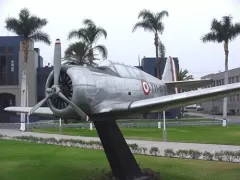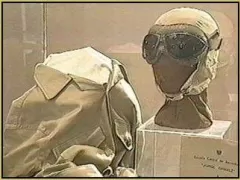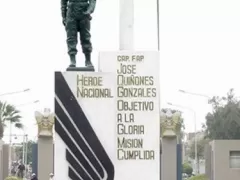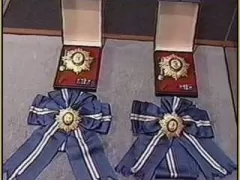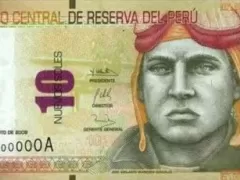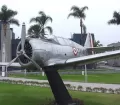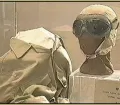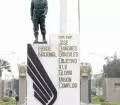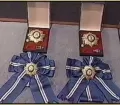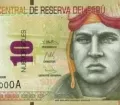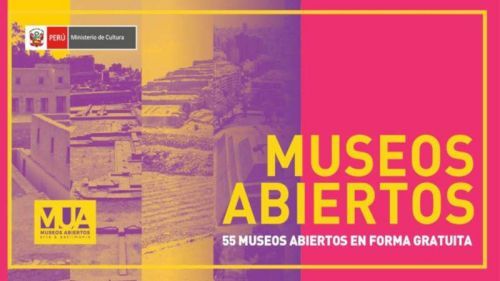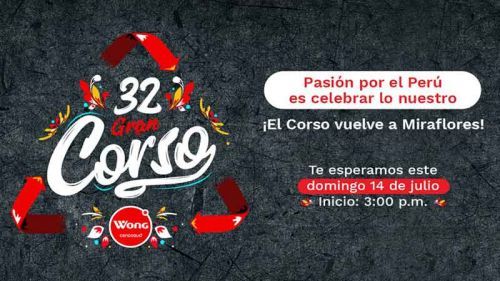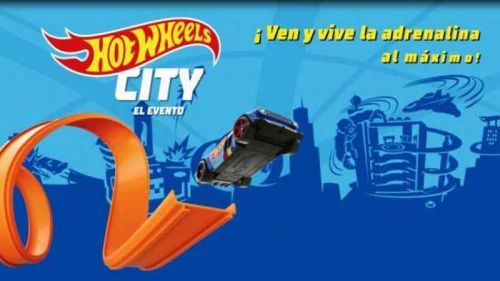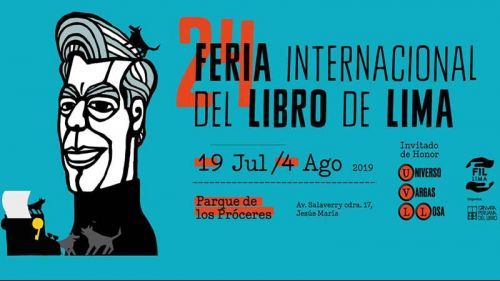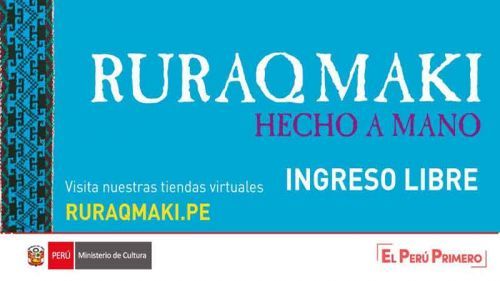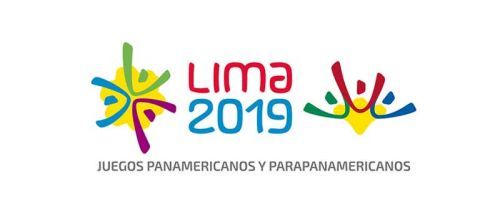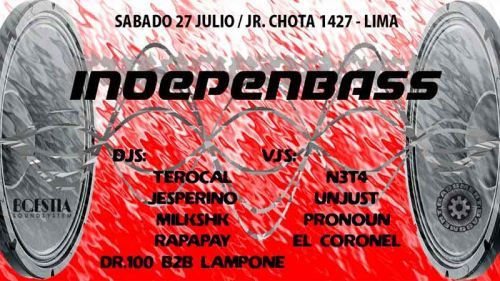José Abelardo Quiñones Gonzáles was a famous Peruvian aviaor. Named the best fighter pilot of the year 1939, he was the first cadet performing an inverted loop and three "tanneaux verticales", a pirouette in which the aircraft rotates around its pivotal point flying in horizontal direction. José Quiñones died in action in July 1941 during the Peruvian War with Ecuador. In 1966 he was declared National Hero.
The aviator José Quiñones was born on the 22nd of April 1914 in the port of Pimentel, close to the city of Chiclayo, as the son of José María Quiñones Arizola and María Juana Rosa Gonzáles Orrego . His education started at the 'San José' school in Chiclayo and continued at the private schools in Lima ('Sagrados Corazones Recoleta' and 'Nuestra Señora de Guadalupe').
Against his parents will José Quiñones joined 1935 the 'Escuela Central de Aviación Jorge Chávez' (Central Aviation College Jorge Chávez) and left it on the 21st of January 1939 as a second lieutenant, awarded with the 'Ala de Oro' (gold wing) as the best fighter pilot of his year. He was the first cadet performing an inverted loop and three "tanneaux verticales", a pirouette in which the aircraft rotates around its pivotal point flying in horizontal direction.
In the aviation college Quiñones received the theoretical and practical knowledge of flying. It was there, that he realized his responsibility to serve and defend his country. After the college Quiñones was assigned to the squadron No. 4 based in Ancón. Some months later, in June 1939, he returned to Lima to the 'Central Aviation College' at the Las Palmas base, only to be transferred later that year to the Air Base of Chiclayo. He was assigned to the squadron No. 41 (acrobatics), where he could show off his skills and abilities at some local air shows, repeating those as well in Lima and Arequipa. On the 28th of January 1941 he was promoted to an lieutenant.
In 1941 a conflict between Ecuador and Peru escalated. On the 5th of July Ecuadorian troops tried to cross the Zarumilla River and occupied the isles of Noblecilla and Matapolo and the plateau of Caucho. Peru reacted immediately and could defeat the enemy on all frontline's within three weeks. Since the beginning of the dispute José Quiñones was instructed to do reconnaissance flights and to take pictures of the Ecuadorian positions.
On the 23rd of July his squadron No. 41 took off from Tumbes airport with the mission to attack Ecuadorian positions at Quebrada Seca. While descending to release his bombs over enemy ground he came under heavy enemy fire and his plane was hit badly. Instead of bailing out of his burning plane, Quiñones continued heading towards the enemy. In a heroic act his life ended when he crashed into the enemy positions and destroyed them completely.
This great Peruvian aviator, who defended courageously his homeland was promoted postmortem to a captain of the Peruvian Air Force. Three months later, on the 19th of October 1941, his remains were handed over to the Peruvian consul in Guayaquil. Since 1961 José Quiñones is laid to rest in the mausoleum on the Las Palmas Air Base and remains of his plane exhibited next to him.
On the 10th of May 1966, Quiñones was declared a national hero (Law No. 16126). The day of his death, the 23rd of July was designated to the Peruvian Air Force. To honour him, the airport of Chiclayo was later named after this brave aviator 'José Quiñones Gonzáles Airport'. Today you can find an image of Quiñones on the S/. 10 banknote.


